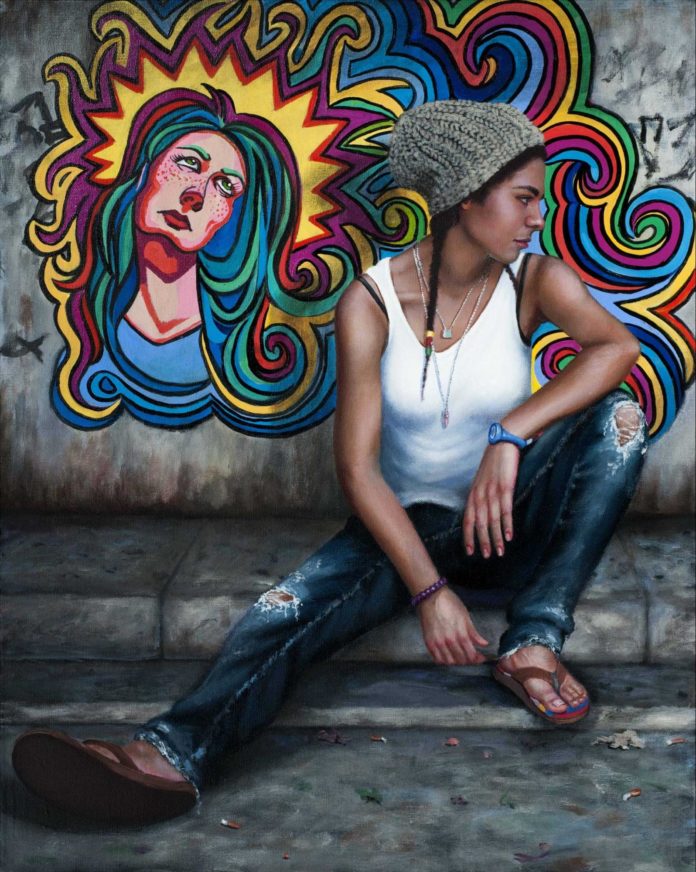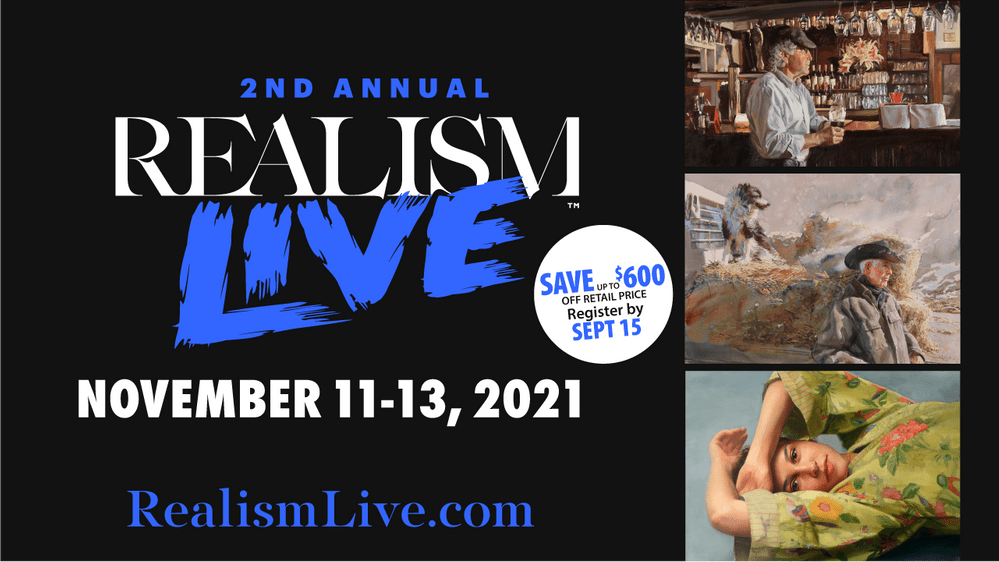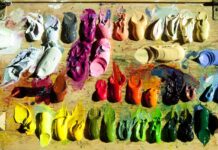Contemporary acrylic portraits > Why acrylic is the medium of choice for this artist, despite the tradition of oil.
BY CHRISTINA RAMOS
My journey to becoming an artist was unconventional. As a child, my father instilled in me an appreciation of classical and romantic figurative art. I loved art classes in high school, but I compared myself to others in my class, and believed I wasn’t good enough to pursue art study. I went on to major in architectural drafting instead, leaving art behind. After college, I got married and had children. Eventually, we would expand the world’s population with four wonderful kids. Being a mother was the best job in the world, but I had a longing to create. I started painting with one child in my lap and another at my feet. Not ideal conditions — but I have been told, “Bloom where you are planted.”
I began painting in acrylic because it was a more “kid friendly” medium — no solvents or mediums to worry about; no wet paintings just waiting for little fingers to smear. The problem was that my artistic sensibilities always favored the classics, while examples of acrylic painting always leaned more to the abstract expressionists. As my kids grew older, I took classes with a few highly esteemed painters, only to find that their methods did not translate well into acrylics. A lot of my peers encouraged me to switch to oil, but I had grown so accustomed to the quick drying times of acrylic that every attempt I made with oil paint ended with me wearing it on my clothes, face, and hair.
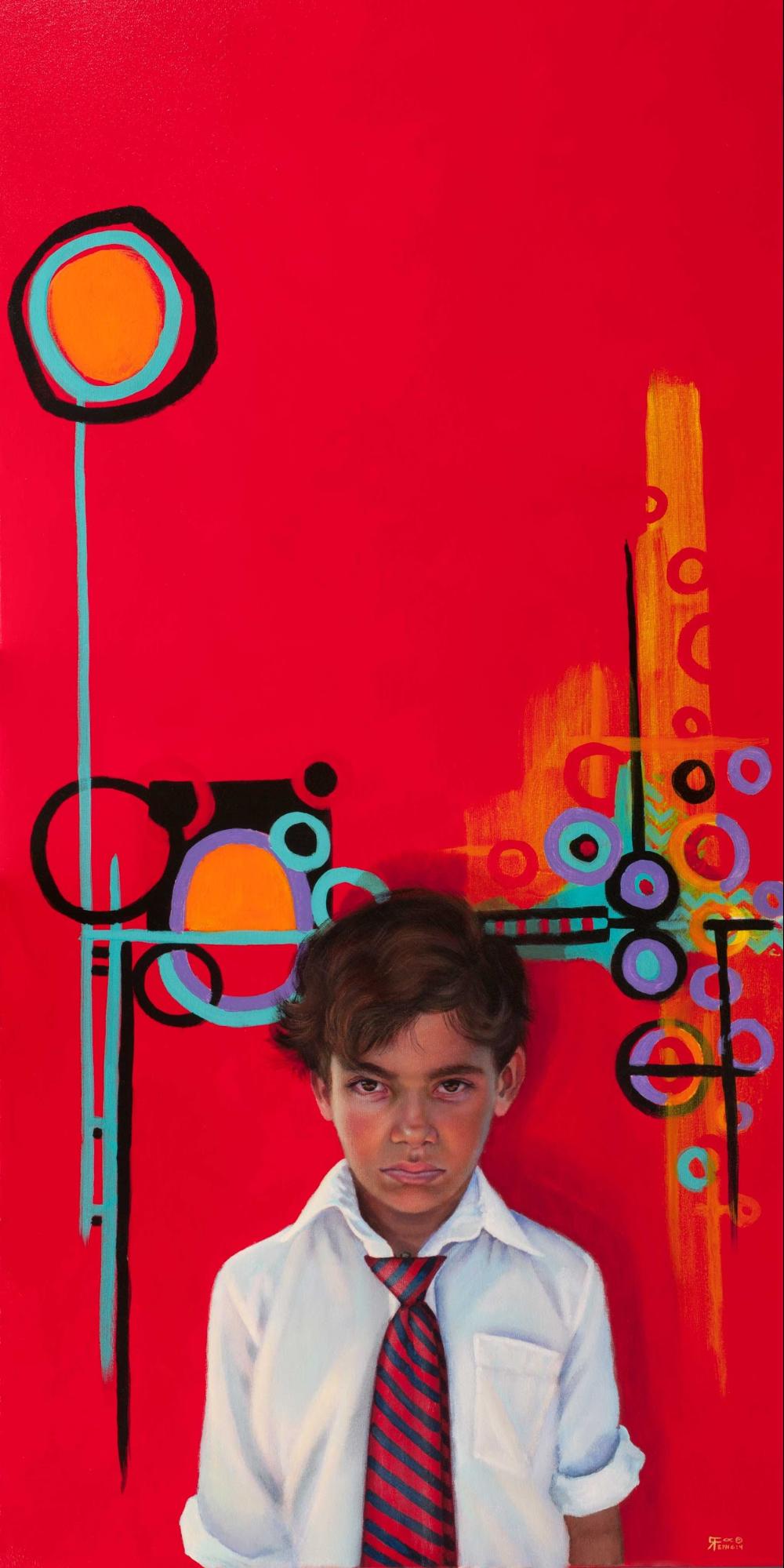
Through trial and lots of error, I began to create my own method of acrylic painting that allowed me to paint in the representational style of the artists I loved so much. For a long time, this method was haphazard and improvised (like your grandmother’s recipe card that calls for a “pinch of this” or “dash of that”), but teaching provided me the opportunity to reflect on my process, to learn the terminology, and to help others create their own art.
I would never have thought that my years of painting among dirty diapers and Barney reruns would lead to a career in painting instruction, but I was graciously afforded this opportunity when I asked the staff at Los Angeles Academy of Figurative Art (LAAFA) if they were interested in me teaching an acrylics class. It only took a few years for them to take me up on my offer, but today I am honored to say that I am still the only acrylic painting instructor at LAAFA. I know it is still a hard sell. Most people want to learn figure and portrait painting with oils, but others, like myself, see the advantages that acrylics can give.
Related Article > What I Learned by Painting 30 Portraits of Refugees
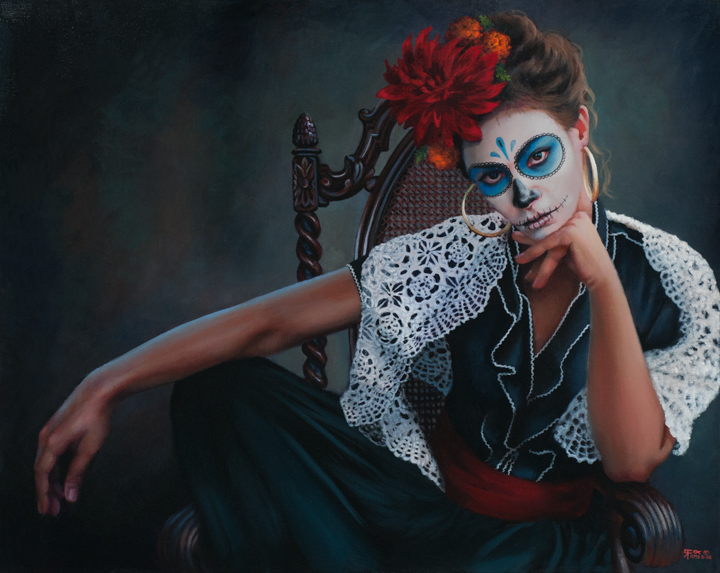
Several years ago, I was thrilled to be hired by Golden Artist Colors as one of their “Working Artists.” Now I go to colleges, universities, retailers, and art groups to give educational lecture demonstrations about all things paint. It is surprising how little most artists actually know about the materials they are using, and being able to understand the chemistry, the pigments, the binders, and the mediums is a great advantage to making good choices as a consumer.
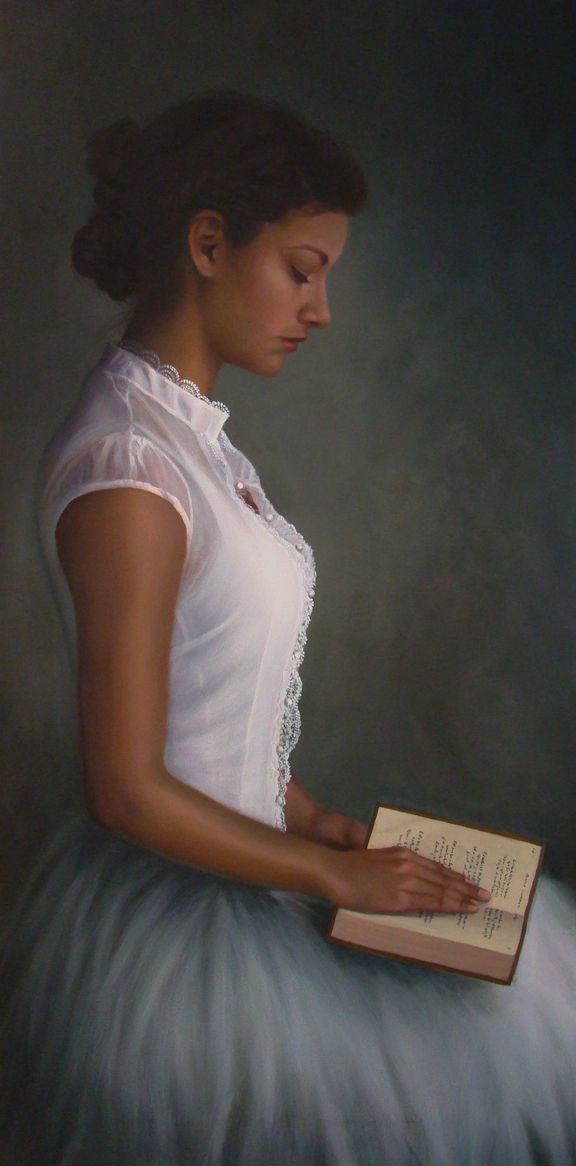
Being a teacher with LAAFA and Golden has allowed me to grow in new ways as an artist. While I love helping others create their art and educating artists, I am still consumed by my need to create my own work. When it comes to subject matter, I have always favored the portrait and figure. Even as a child, when I would go to museums I would stare deeply into the eyes of the portraits and be amazed at the skill of the artist. I also think all the years I spent with T-squares and rulers made me want to paint things that had no straight lines.
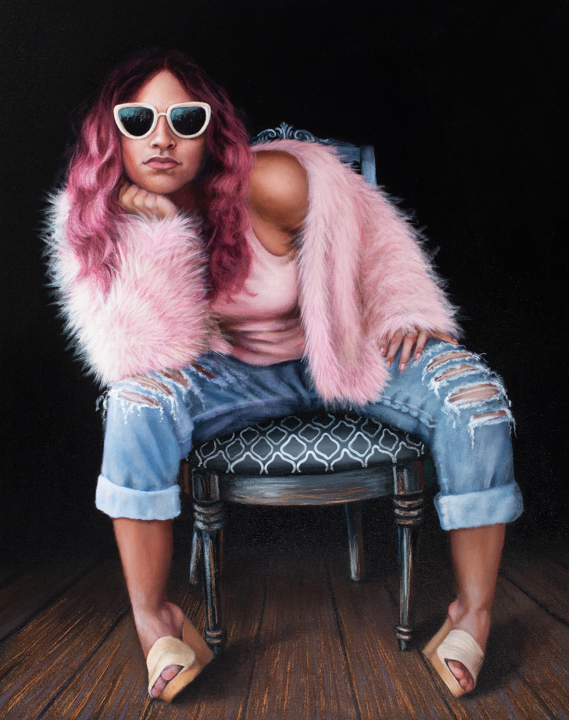
The fact that I had four offspring came in handy when it came to locating models. I could always sway one of my kids to model for me with the promise of their favorite dinner. My children are still my favorite subjects, with my daughter probably being my most willing and versatile model. She is always willing to put on whatever crazy outfit I have concocted. Luckily, she too is an artist, and as she has grown, she has become not only my muse, but my collaborator.
I am thankful for my unconventional journey into art, and that I continue to grow and learn as an artist. I want to share my acrylic painting process as it has emerged from the throes of full-time motherhood. Here goes.

A Questionable Sense of Humor
When it comes to subject matter, I tend to favor painting portraits and the figure. I normally do a small series of about five to ten paintings with the same theme.
Although I work from life when I teach, I usually work from photos in the studio. I will shoot about 100 images of my model, and select just a handful to use in my art.
I get bored easily, and the monotony of working alone in the studio day after day has led me to find ways to keep myself entertained. I love to laugh, and have often been accused of having a questionable sense of humor (guilty as charged). This has led me to create a few series of paintings that reflect my humor and desire to entertain.
I started off painting nuns in less-than-holy situations. The series is called “Bad Habits,” and although at first glance they appear to be sacrilegious, they are in fact quite innocent. All the paintings are self-portraits, and are used to reflect our flawed nature as human beings, striving to be good, but often falling short.
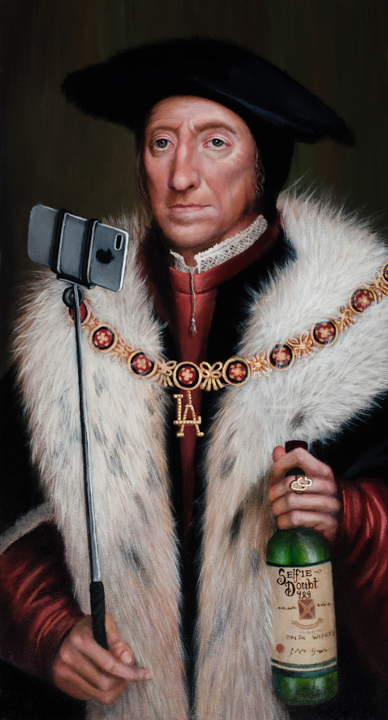
My most recent series of humorous paintings is called “Manipulating the Masters.” The paintings are based on works of Hans Holbein the Younger. They actually just started off as master copies. I wanted to increase my skill and understanding of the process of this master painter from the house of King Henry VIII, so I began copying these masterworks, but was compelled to add a modern comedic twist to each one.
With both of these series, the titles are intrinsic to the success and understanding of the paintings. The wordplay gives the “ah-ha” moment to the images. Although I enjoy creating work that makes people laugh, I have an honest fear that when I die, I will be remembered as the girl who painted the nuns. Hopefully not, but as long as I’m remembered for something that will be enough.
ABOUT THE ARTIST

Christina Ramos is a nationally recognized artist from Southern California. Specializing in figurative realism, Christina was named as an “Artist to Watch in 2015” by Southwest Art magazine, and as one of America’s Great Painters by American Galleries. Her work has been shown throughout the United States and has been honored with awards from the Portrait Society of America, the Society of Acrylic and Casein Painters, the National Acrylic and Oil Painters Society, the International Society of Acrylic Painters, and many more.
Her innovative use of acrylic has made her a much sought after demonstrator and instructor. She is currently a Golden Working Artist representing the Golden Artist Colors, Williamsburg Handmade Oils, and QoR Watercolor companies.
Ramos’s work has been shown at the Santa Paula Museum of Art, San Diego Museum of the Living Artist, International Museum of Contemporary Masters of Fine Art, Pacific Asian Museum, and many galleries throughout the United States. She is an active member of the Portrait Society of America, National Oil and Acrylic Painters Society, International Society of Acrylic Painters, and the California Art Club. Ramos’s work is held in many private collections in the United States and Europe.
Visit EricRhoads.com (Publisher of Realism Today) to learn about opportunities for artists and art collectors, including:
- Art retreats
- International art trips
- Art conventions
- Art workshops (in person and online)
- And more!


